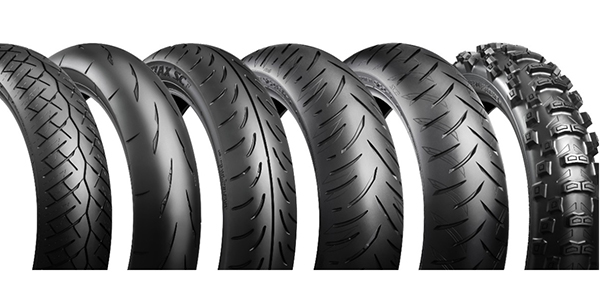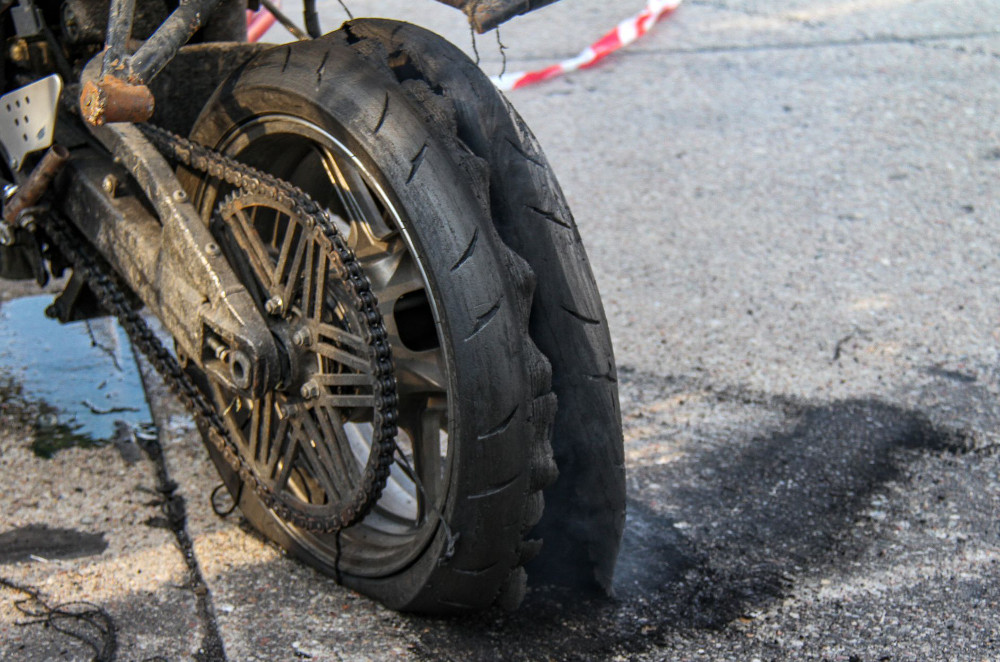Detailed Motorcycle Tyre Guide for New and Experienced Riders
Detailed Motorcycle Tyre Guide for New and Experienced Riders
Blog Article
Explore the Relevance of Picking the Right Tyres With Our Interesting Motorcycle Tyre Guide
Picking the proper tires is crucial for any Motorcycle lover. The right tyres enhance performance, boost safety and security, and add to general comfort throughout rides. Understanding the various kinds, dimensions, and maintenance practices can significantly influence your riding experience. As riders deal with varied surfaces and problems, understanding how to choose the finest tyres comes to be vital. What elements should be taken into consideration to assure peak efficiency? The answers wait for in the following sections.
Recognizing Different Types of Motorcycle Tyres
Although picking the ideal sort of Motorcycle tire might appear frustrating, recognizing the numerous choices readily available can significantly boost a rider's experience. Motorcycle tyres are primarily classified right into three kinds: sport, touring, and off-road. Visiting tyres are made for long-distance travel, offering durability and comfort on freeways. These tyres feature a walk pattern that offers exceptional grasp and stability, making them suitable for numerous weather condition conditions.Sport tires, on the various other hand, focus on efficiency and handling, including a softer rubber substance that improves grip throughout cornering. They are perfect for motorcyclists who appreciate spirited trips on twisty roadways or racetracks. Off-road tyres are customized for rugged terrain, with a hostile step pattern that supplies grip on loose surfaces like dust or gravel.
Evaluating Your Riding Design and Demands
When evaluating riding style and needs, recognizing exactly how various riding conditions affect efficiency is essential. This examination can assist cyclists in choosing the proper tyre kinds that straighten with their particular needs. By thinking about elements such as surface and climate, cyclists can make educated decisions for ideal safety and security and experience.
Riding Conditions Influence
As motorcyclists browse various terrains and weather conditions, understanding how these aspects affect Motorcycle efficiency becomes vital. Different riding environments, such as wet, completely dry, or off-road, need certain tyre qualities to guarantee safety and security and excellent handling. As an example, damp conditions call for tires that provide better hold to stop hydroplaning, while off-road riding necessitates robust tread patterns for traction on loose surfaces. In addition, temperature variations can affect tyre pressure and performance, calling for adjustments based on the conditions dealt with. Riders must assess their typical routes and atmospheres when selecting tyres, as the right option can greatly enhance their riding experience, guaranteeing both convenience and safety and security in varied scenarios. Matching tires to riding conditions is essential for effective Motorcycle performance.
Tyre Types Review
Comprehending the different kinds of Motorcycle tyres is essential for cyclists intending to improve their performance and safety. Each tyre kind deals with details riding styles and conditions. Sport tyres, developed for high grasp and dexterity, are perfect for aggressive riding and track days. Touring tyres prioritize durability and convenience, making them suitable for long-distance journeys. Off-road tyres feature much deeper footsteps for traction on unequal surface areas, appealing to adventure hunters. Cruiser tires offer a smooth experience, typically emphasizing visual appeals for choppers and cruisers. Dual-sport tyres mix attributes of both off-road and on-road tires, offering functional riders. Evaluating individual riding designs and needs guarantees that the best tyre type is selected, inevitably boosting general riding experience and safety and security.
The Effect of Tyre Size on Efficiency
Tyre size greatly influences a bike's total efficiency, impacting grip, stability, and handling. The diameter and size of tyres can especially modify a bike's dynamics. Larger size tires can enhance high-speed efficiency, supplying smoother experiences and boosted security throughout straight-line travel. However, they may also call for more effort for quick handling. On the other hand, narrower tires often tend to use much better dexterity and responsiveness, making them ideal for dilemmas and intricate riding conditions.Additionally, the facet ratio, which connects to the tire's height, plays a critical role in performance characteristics. A lower profile tyre may improve cornering security but can jeopardize convenience due to decreased cushioning. Ultimately, picking the ideal tyre dimension aligns with the cyclist's choices and intended use, whether for sport, touring, or off-road riding. Recognizing these nuances assurances peak efficiency and improves the overall riding experience.
Tread Patterns and Their Value
Step patterns on Motorcycle tyres play an essential function in figuring out performance, influencing variables such as grasp and handling. Different sorts of tread designs accommodate different weather and surfaces, making sure optimal grip and stability. Comprehending these patterns is very important for motorcyclists seeking to enhance their Motorcycle's efficiency and security.
Types of Tread Patterns
The performance of a motorcycle is considerably affected by the kind of step pattern on its tyres. Various tread patterns offer details features, satisfying different riding problems. Slick tires feature a smooth surface, ideal for completely dry problems and auto racing, supplying maximum hold. In comparison, tyres with deep grooves and intricate patterns are designed for damp or off-road problems, improving water displacement and grip. Some walk designs, such as dual-purpose tyres, strike an equilibrium for both on-road and light off-road usage. motorcycle tyre guide. Additionally, sport tires commonly have a more aggressive walk pattern, boosting cornering stability. Understanding these kinds of tread patterns helps motorcyclists choose the appropriate tyres for their intended riding experiences and environmental conditions
Influence on Efficiency
Picking the appropriate step pattern considerably influences a motorbike's performance in various riding conditions. Walk patterns are made to optimize grasp, dealing with, and stability, straight influencing cornering capacity and stopping performance. An extra hostile step style enhances traction on irregular surface areas, making it appropriate for off-road riding. Alternatively, a slicker step pattern promotes smoother rides on paved roads, lowering rolling resistance and boosting gas effectiveness. The depth and arrangement of grooves additionally play an important function, enabling for reliable water displacement and minimizing hydroplaning risks. Ultimately, choosing a suitable step pattern customized to specific riding styles and atmospheres warranties enhanced control, safety and security, and general riding experience, highlighting the significance of this decision site for Motorcycle enthusiasts.
Weather and Surface Suitability
Weather and terrain types significantly affect the suitability of Motorcycle tire step patterns. In wet problems, tyres with deeper grooves and specific patterns are essential to direct water away and lower the threat of aquaplaning. Alternatively, a flatter walk design deals excellent surface contact for completely dry roadways, boosting hold and security. For off-road riding, bumpy tyres offer increased traction on loose surface areas like mud and crushed rock. Each tread pattern offers a distinct function; consequently, selecting the suitable tire is essential for efficiency and safety. Bikers need to consider their typical riding setting-- whether metropolitan, country, or varied surfaces-- to guarantee their tyres can adequately deal with the conditions, promoting a much safer and a lot more enjoyable riding experience.
Preserving Your Motorcycle Tyres for Long Life
While Motorcycle enthusiasts frequently concentrate on efficiency and aesthetic appeals, neglecting tire upkeep can lead to premature wear and harmful riding problems. On a regular basis checking tyre pressure is critical, as both under-inflation and over-inflation can negatively impact dealing with and hold. Additionally, keeping the right stress can improve gas performance and overall performance.Routine assessments for indications of damages, such as splits or punctures, likewise play an essential function in prolonging tyre life. Keeping tires clean from particles and pollutants guarantees peak grip. Additionally, rotating tires consistently helps distribute put on evenly, lengthening their lifespan.Proper positioning and balancing of the wheels are necessary for keeping stability and decreasing irregular wear. Sticking to the producer's referrals for tire substitute intervals guarantees that cyclists are furnished with reputable and secure tyres. By prioritizing these maintenance methods, motorcyclists can delight in a much safer and longer-lasting riding experience.
Acknowledging Tire Use and When to Change
To guarantee optimal safety and security and efficiency, bikers need to be vigilant in acknowledging tire wear and understanding when to change their tires. Tyre tread deepness is a vital sign; a depth of 1.6 mm or less normally indicates the need for substitute. Bikers ought to also take a look at the tyres for uneven wear patterns, which can suggest positioning or suspension concerns. Fractures, bulges, or noticeable cables are serious indications of wear and tear and warrant instant replacement.Monitoring tyre Visit Your URL stress is vital as you can try this out under-inflation can accelerate wear and concession safety and security. In addition, bikers must recognize the age of their tyres; even if the tread appears adequate, tyres older than five years might require changing as a result of rubber degradation. Normal evaluations and maintenance will aid establish that tires remain in peak condition, ultimately enhancing both cyclist safety and security and total Motorcycle performance.

Tips for Selecting the Right Tyres for Your Bike
Picking the best tires for a bike is critical for guaranteeing suitable efficiency and safety, especially after identifying the signs of wear that demand substitute. Initially, bikers ought to consider their riding style and the kinds of problems they usually run into. Sporting activity tyres provide enhanced grip for hostile riding, while touring tires supply longevity and convenience for long journeys.Next, it's essential to check the manufacturer's specs for the Motorcycle, as these standards guarantee compatibility. In addition, assessing tire size, step pattern, and rubber compound can affect efficiency. Motorcyclists must likewise consider weather; certain tires do better in dry or damp environments.Finally, buying from trusted brand names can guarantee quality and integrity, while speaking with fellow cyclists or professionals can give useful insights. By very carefully thinking about these variables, riders can choose tyres that improve their Motorcycle's performance, safety, and overall riding experience.
Frequently Asked Questions
How Do Weather Affect Tyre Performance?
Climate problems significantly affect tyre efficiency, influencing hold, dealing with, and wear. Rain can lower grip, while extreme warm may create overheating. Cold temperatures can set rubber, compromising adaptability, therefore affecting total security and ability to move on the road.
Can I Mix Different Tire Brands on My Motorcycle?
Blending various tyre brand names on a motorcycle can result in irregular handling and efficiency - motorcycle tyre guide. Professionals recommend making use of the same brand and model for both front and back tyres to assure maximum security and stability during trips
What Is the Ordinary Life Expectancy of Motorcycle Tyres?

Do Motorcycle Tyres Need to Be Balanced?
Motorcycle tyres do call for balancing to guarantee also weight distribution. Correctly well balanced tires enhance security, improve handling, and reduce uneven wear, eventually adding to a safer and a lot more comfy riding experience for motorcyclists.
Exactly how Commonly Should I Check My Tire Pressure?
Normal checks of tyre pressure are vital for safety and efficiency. It is recommended to examine Motorcycle tyre pressure a minimum of as soon as a month and in the past long rides, guaranteeing perfect handling and fuel efficiency. These tyres include a step pattern that offers excellent grasp and security, making them ideal for various weather conditions.Sport tires, on the various other hand, focus on efficiency and handling, including a softer rubber substance that enhances grip during cornering. On the other hand, narrower tyres have a tendency to use far better dexterity and responsiveness, making them suitable for tight corners and complex riding conditions.Additionally, the element proportion, which associates to the tire's height, plays an essential role in performance characteristics. Sticking to the supplier's referrals for tyre substitute periods guarantees that riders are furnished with secure and dependable tires. To ensure optimal security and efficiency, motorcyclists should be watchful in acknowledging tire wear and understanding when to change their tires. Sporting activity tires provide boosted hold for hostile riding, while visiting tires give durability and convenience for long journeys.Next, it's essential to examine the manufacturer's specifications for the Motorcycle, as these standards guarantee compatibility.
Report this page